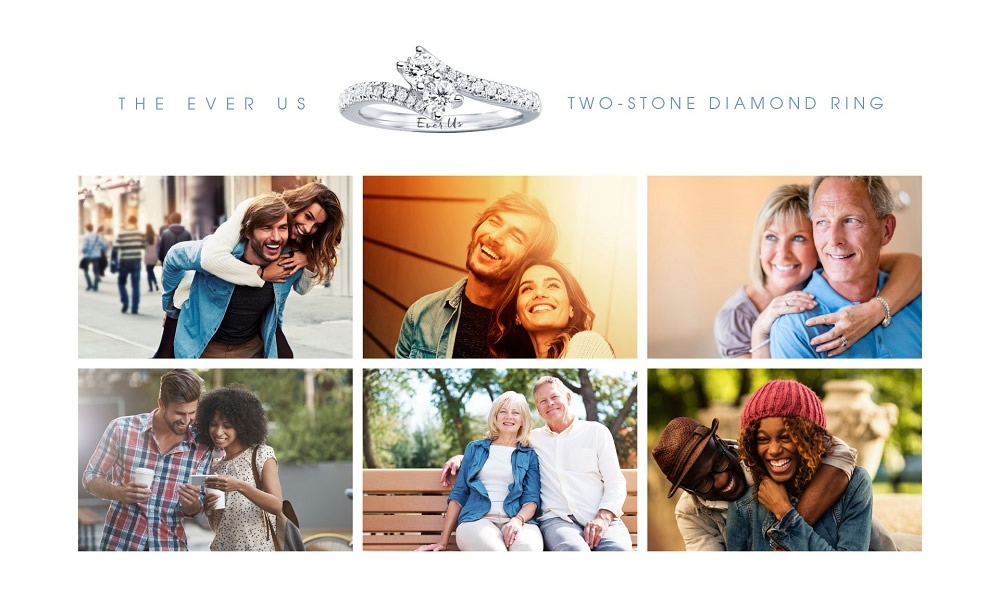Here are some of this year’s biggest diamond stories:
– De Beers is bringing back “A Diamond Is Forever.”
– It’s also reviving its “Seize the Day” ads as part of a (quasi-)generic campaign.
– Signet and (De Beers-owned) Forevermark are joining together to create a new beacon, the two-stone Ever Us ring.
We can see a clear pattern: As our industry struggles, the big players are looking to the past and resurrecting what worked (sometimes spectacularly). That isn’t a bad thing; these initiatives should never have been abandoned in the first place. In fact, if they had kept running, they might have evolved. The problem now is we don’t know if these old paradigms will still resonate. In the years since De Beers introduced its last beacon, the world has changed immeasurably.
Certainly the jewelry world has changed. Whereas De Beers was once the pacesetter for the U.S. market, today Signet is. Its two-stone campaign seems an attempt to create a new must-have product category almost by will. Teaming up with the Forevermark—the only other diamond seller with a large ad budget—is smart out-of-the-box thinking that should benefit both sides.
Of course, the two-stone idea explicitly calls to mind the three-stone ring, which was introduced around 2000 and was unquestionably De Beers’ most successful beacon. Like the “past present future” three-stone ring, Ever Us is noteworthy for its clever positioning—one diamond stands for love, the other for friendship. You can see the new ads here: They are sentimental but not syrupy, which is a line Signet has had difficulty navigating in the past.

